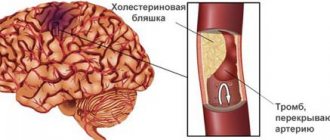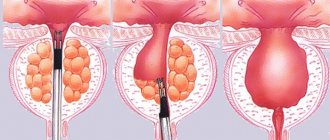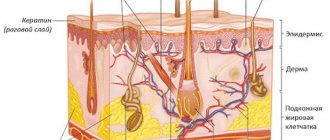Increased thirst and urination.
This is the most common sign of diabetes. Since insulin is not produced by the body, or is produced in insufficient quantities, sugar is in free flight. Once in the kidneys, sugar is excreted along with urine, simultaneously collecting fluid from other tissues, thus loading the kidneys and dehydrating the body. As a result, a person begins to drink more water, trips to the toilet increase, forming a kind of vicious circle. A person becomes constantly tired and irritable (who enjoys spending days involuntarily engaged in the “water cycle in nature”!), in addition to the kidneys, the heart is also in a stressed state, because Sugar safely “removes” fluid from the circulatory system, the blood becomes viscous and thick, and the heart has to push it to the peripheries with redoubled force, raising blood pressure.
Diabetes mellitus type 2 - symptoms and treatment
Treatment of type II diabetes involves solving the main problems:
- compensate for the lack of insulin;
- correct hormonal and metabolic disorders;
- implementation of therapy and prevention of complications.
To solve them, the following treatment methods are used:
- diet therapy;
- physical exercise;
- use of glucose-lowering drugs;
- insulin therapy;
- surgical intervention.
Diet therapy
The diet for type II diabetes, like a regular diet, requires an optimal ratio of the main substances contained in foods: proteins should make up 16% of the daily diet, fats - 24%, and carbohydrates - 60%. The difference between the diet for type II diabetes lies in the nature of the carbohydrates consumed: refined sugars are replaced by slowly digestible carbohydrates. Since this disease occurs in obese people, weight loss is the most important condition for normalizing blood glucose levels. In this regard, a caloric diet is recommended, in which the patient will lose 500 g of body weight weekly until reaching the ideal weight. However, weekly weight loss should not exceed 2 kg, otherwise this will lead to excessive loss of muscle rather than fat tissue. The number of calories required for the daily diet of patients with type II diabetes is calculated as follows: women need to multiply their ideal weight by 20 kcal, and men by 25 kcal.
When following a diet, it is necessary to take vitamins, since during diet therapy they are excessively excreted in the urine. The lack of vitamins in the body can be compensated by rational consumption of healthy foods, such as fresh herbs, vegetables, fruits and berries. During the winter and spring periods, it is possible to take vitamins in yeast form.
Exercise stress
A correctly selected system of physical exercises, taking into account the course of the disease, age and present complications, contributes to a significant improvement in the condition of the patient with diabetes. This treatment method is good because the need to use insulitis practically disappears, since during physical activity glucose and lipids are burned without its participation.
Treatment with glucose-lowering drugs
Today, derivatives of glucose-lowering drugs are used:
- sulfonylureas (tolbutamide, glibenclamide);
- biguanides, which reduce gluconeogenesis in the liver and increase the sensitivity of muscles and liver to insulin (metformin);
- thiazolidinediones (glitazones), similar in properties to biguanides (pioglitazone, rosiglitazone);
- alpha-glucosidase inhibitors, which reduce the rate of glucose absorption in the gastrointestinal tract (acarbose);
- agonists of glucagon-like peptide-1 receptors, stimulating the synthesis and secretion of insulin, reducing liver glucose production, appetite and body weight, slowing down the evacuation of the food bolus from the stomach (exenatide, liraglutide);
- depeptidyl peptidase-4 inhibitors, which also stimulate the synthesis and secretion of insulin, reduce the production of glucose by the liver, do not affect the rate of evacuation of food from the stomach and have a neutral effect on body weight (sitagliptin, vildagliptin);
- inhibitors of sodium-glucose cotransporter type 2 (gliflozin), which reduce the reabsorption (absorption) of glucose in the kidneys, as well as body weight (dapagliflozin, empagliflozin).
Insulin therapy
Depending on the severity of the disease and the complications that arise, the doctor prescribes insulin. This treatment method is indicated in approximately 15-20% of cases. Indications for the use of insulin therapy are:
- rapid weight loss for no apparent reason;
- the occurrence of complications;
- insufficient effectiveness of other glucose-lowering drugs.
Surgery
Despite the many hypoglycemic drugs, the question of their correct dosage, as well as patient adherence to the chosen method of therapy, remains unresolved. This, in turn, creates difficulties in achieving long-term remission of type II diabetes. Therefore, surgical therapy for this disease—bariatric or metabolic surgery—is becoming increasingly popular around the world. The IFD considers this method of treating patients with type II diabetes to be effective. Currently, more than 500,000 bariatric surgeries are performed worldwide each year. There are several types of metabolic surgery, the most common being gastric bypass and mini gastric bypass.[4]
Roux-en-Y gastric bypass
During bypass surgery, the stomach is divided below the esophagus so that its volume is reduced to 30 ml. The remaining large part of the stomach is not removed, but is sealed, preventing food from entering it.[5] As a result of the intersection, a small stomach is formed, to which the small intestine is then sewn, 1 m away from its end. This way, food will go directly into the large intestine, while its processing by digestive juices will be reduced. This, in turn, provokes irritation of L-cells in the ileum, which contributes to a decrease in appetite and an increase in the growth of cells that synthesize insulin.
Mini gastric bypass
The main difference between mini-gastrobypass and classic gastric bypass is the reduction in the number of anastomoses (connections of intestinal segments).[2] When performing a traditional operation, two anastomoses are performed: the connection of the stomach and small intestine and the connection of different parts of the small intestine. With mini-gastrobypass, there is only one anastomosis - between the stomach and the small intestine. Due to the small volume of the newly formed stomach and the rapid entry of food into the small intestine, the patient has a feeling of fullness even after eating small portions of food.
Other types of bariatric surgery include:
- gastropplication - suturing the stomach to prevent it from stretching;[8]
- sleeve gastroplasty (otherwise called laparoscopic longitudinal gastrectomy) - cutting off most of the stomach and forming a 30 ml gastric tube, which promotes rapid saturation and also allows you to avoid following a strict diet;
- Gastric banding is a reduction in the volume of the stomach using a special ring (band) placed on the upper part of the stomach (this intervention is reversible).
Contraindications to surgical treatment are the presence of esophagitis (inflammation of the mucous membrane of the esophagus), varicose veins of the esophagus, portal hypertension, liver cirrhosis, gastric or duodenal ulcer, chronic pancreatitis, pregnancy, alcoholism, severe diseases of the cardiovascular system or mental illness. disorders, as well as long-term use of hormonal drugs.
Hunger
The second most common symptom of diabetes is the feeling of constant hunger. The whole point is that food, due to the lack of insulin or its insufficiency, is not processed into glucose. If all organs of the body can do well without glucose, then the brain, on the contrary, requires glucose to produce energy. And so the following situation arises: a person eats, the food enters the stomach and is digested, all the vitamins and minerals enter the cells and blood, and only the brain remains hungry. He again gives the command to his stomach: “Ask to eat!” The person eats again, and... again everyone is happy, except the brain. Another vicious circle... A person eats food, but does not feel full. Starvation of the brain leads to loss of energy, and weakness and fatigue become a chronic condition.
Symptoms in pregnant women
It is very difficult to track how diabetes mellitus begins in pregnant women. Hormonal changes in the body make it difficult to determine the presence of abnormalities using tests. Glucose and insulin levels fluctuate within normal limits at this time. But already from the second trimester it becomes clear whether there is pathology. It is during this period that the level of danger is determined. The main external sign indicating the development of the problem is a sharp deterioration in vision.
During the development of this pathology, the condition of the genitourinary system worsens. Exacerbation of infectious diseases of this type occurs even with absolute hygiene. High blood pressure that does not return to normal for a long time will also indicate the presence of problems. Impaired protein synthesis leads to the formation of these elements in the urine. If a girl is registered with a gynecologist, she undergoes tests regularly. This helps to identify abnormalities in time and begin therapy. But for those who neglect going to the doctor, there is a high probability of not recognizing the onset of trouble.
Loss of vision.
If your vision is not as clear as before, you should visit an ophthalmologist. However, if the doctor rules out abnormalities directly in the eyes, you should contact an endocrinologist and take a glucose test. Due to the displacement of the fluid, the lens inflates and changes shape, as a result the eye begins to perceive everything in a blurry and unclear form. At first, when the disease is just beginning to develop, with a correct and timely diagnosis, it is possible to prevent the further development of blindness by keeping blood sugar under control.
Consequences of diabetes in women
Without timely treatment, you risk getting serious complications, getting rid of which will be extremely difficult. The main dangers plaguing diabetics who do not adhere to doctor’s recommendations are:
- Constant swelling. Persistent swelling throughout the body is a consequence of excessive fluid retention in the body.
- Trophic ulcers. They are characteristic of a long course of the disease, which did not respond to appropriate treatment.
- Gangrene. Damage to the blood vessels of the extremities results in amputation. This outcome is typical for an advanced form that has been going on for many years.
- Coma. An extremely rare consequence of a severe form of the disease. This state is preceded by clouding of consciousness and loss of a sense of reality.
Yeast infections and gangrene
Diabetes weakens the immune system and a person becomes susceptible to all sorts of fungal diseases. Fungus and other microbes feed on glucose; this is a favorable environment for them to live and reproduce.
High sugar levels not only provoke inflammation in open wounds, but also interfere with rapid healing. Due to poor circulation, it is difficult for blood to reach the affected areas of the body and repair the damage. In addition, diabetes provokes the creation of a bacterial environment and rot, which can result in gangrene. The peripheral parts of the body are affected first, i.e. legs. Gangrene begins first with tingling and numbness in the big toe, and then spreads throughout the leg. The rotting of a living organism is one of the most unpleasant and terrible sensations. A person experiences it in two cases: with gangrene and cancer. In the end, in despair, the patient, exhausted by pain, decides to amputate the limb.
Naturally, maintaining a daily diet is an expensive and burdensome pleasure. In addition to the fact that a person must eat “tasteless” food, he must also carefully select and dose it, and this for the rest of his life. As a result, most people suffering from diabetes have a breakdown within the first year after the diagnosis is announced. Firstly, this is a huge shock for the patient, and secondly, the understanding that this disease is incurable and the medicine must be taken on an ongoing basis can cause denial of the disease itself.
Signs in women over 30
At this age, as a rule, type 1 develops, a rather severe autoimmune disease.
The development and manifestation of the disease occurs rapidly and most often does not depend on the lifestyle of the sick person. This type is considered hereditary. Its development is almost impossible to prevent. Acute symptoms and early signs for this type of disease:
- nausea and vomiting,
- numbness of the limbs,
- smell of acetone from the mouth,
- thirst and hunger.
If you have these signs, you should not hesitate to get tested in the laboratory. However, you can check your sugar level with a home glucometer. However, do not forget that such a check will not give you the complete picture.
Once you are diagnosed with diabetes, do not delay consulting your doctor. You will be prescribed a special diet and treatment that will help eliminate the severe course of the disease and protect you from disability.
Dark spots on the curves of the body and itching.
Acanthosis nigricans is a condition where dark patches of skin with a velvety texture appear on the body. Usually their habitat is the bends and folds of the skin, such as the armpits, neck, groin, knee and elbow bends, etc. Experts believe that such symptoms are the first signs of diabetes. Darkening of the skin and itching, especially in the perineum, may be the “first signs”.
If these symptoms appear, first of all you need to visit an endocrinologist and venereologist. If sexually transmitted diseases are excluded, then the endocrinologist, based on the tests, can certainly diagnose diabetes mellitus.
Skin manifestations
The course of the disease rarely affects the condition of the skin. However, sometimes changes are observed that indicate problems with glucose production. It is worth paying attention to:
- Peeling and dry skin that were not noticed before.
- Darkening of folds. This is typical for type 2 diabetes.
- Premature aging of the skin. This is due to the fact that pathology can cause aging of the entire organism. This is reflected very strongly on the skin.
Such changes occur very slowly and most people simply do not pay attention to them. It's also worth remembering that these signs may indicate other health problems. It is worth getting tested if you find yourself with similar symptoms. This will help determine the source of the symptoms and eliminate it.
What to do if you notice symptoms of diabetes?
If you suspect diabetes, you should not self-medicate or ignore the initial symptoms. This disease is within the competence of an endocrinologist. However, a therapist can also make a diagnosis.
To determine the presence of a pathological process, in any case you need to seek medical help. The specialist will first listen to the patient’s complaints, study his medical history, and conduct a physical examination. Only on the basis of the listed measures can a preliminary diagnosis be made. To confirm it, you will need to undergo a comprehensive examination.
Diagnostics
The basis of diagnosis is laboratory tests that will detect an increase in glucose in the blood plasma. It is important to carry out a full course of examinations, since a single analysis is not informative - external factors can influence glucose levels. Basic laboratory tests confirming diabetes:
- blood test for glucose level (given in the morning, on an empty stomach);
- exercise test (determination of glucose tolerance (blood is taken on an empty stomach, then 1 and 2 hours after taking a glucose solution);
- biochemical studies (protein, lipid, electrolyte levels);
- assessment of the level of glycosylated hemoglobin HbA1c;
- general and 24-hour urine analysis with determination of glucose and protein levels;
- determination of endogenous insulin levels.
The doctor also prescribes a number of instrumental tests and consultations - an examination by an ophthalmologist with an assessment of the fundus of the eye, a consultation with a neurologist with an assessment of the condition of peripheral nerves, blood pressure monitoring, an ECG, and an ultrasound of internal organs and blood vessels.
Prevention
In order to maintain health and reduce the risk of developing the disease, it is necessary to control your weight, regularly evaluate carbohydrate and lipid metabolism, and undergo medical examination. Moderate physical activity, drinking enough fluids and a balanced diet with a reduction in the amount of carbohydrates, saturated fats, fast food, and refined foods are important Source: Prevention of diabetes. Zavyalova Y.S., Bogdanova V.D. CETERIS PARIBUS, 2021.
Sources:
- Epidemiology of diabetes mellitus. Nurdinova G.U., Avezova G.S., Berdieva D.B., Sherkuzieva G.F. International scientific review, 2016
- Classification of diabetes mellitus. Petrova M.M., Kurumchina, Kirichkova G.A. Bulletin of the Clinical Hospital No. 51, 2008. p. 3-8
- Prevention of diabetes. Zavyalova Y.S., Bogdanova V.D. CETERIS PARIBUS, 2016
- On the issue of preventing diabetes mellitus. Musorin E.D., Shamaeva Yu.Yu., Starshinov A.V., Pichugina N.N. Bulletin of Medical Internet Conferences, 2015
- Progress in the treatment of diabetes. Litvak Nikolay. Remedium. Journal about the Russian market of drugs and medical equipment, 2021. p.64-65
- Methods of treating diabetes mellitus. Manusharova R.A. Medical Council, 2008. p. 53-62
| Name of service (price list incomplete) | Price, rub.) | In installments* |
| Appointment (examination, consultation) with an endocrinologist, primary, therapeutic and diagnostic, outpatient | 1 750 | — |
| Program “Risk of developing type 2 diabetes mellitus” (blood, quality) | 6 500 | — |
* You can read more about the conditions here - Treatment on credit or in installments.









